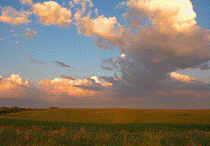North American Prairie Conference
Date of this Version
1989
Document Type
Article
Abstract
Usefulness of native prairie and domesticated grasses in re-vegetating strip mine spoil and producing biomass was examined on 30-year old, recontoured spoil banks located near Canton, Illinois. Grasses were planted in the spring and fall on strip mine spoil and spoil amended with 333 MT/ha of dry sewage sludge. By the end of the second growing season, indiangrass [Sorghastrum nutans (L.) Nash] produced more biomass than the other warm-season grasses, switchgrass (Panicum virgatum L.) and little bluestem [Schizachyrium scoparium (Michx.) Nash], on the unamended plots, and no warm-season grasses survived on the sludge amended plots. Warm-season grasses were able to compete with weedy species on unamended sites, but two cool-season grasses, reed canarygrass (Phalaris arundinacea L.) and Kentucky 31 tall fescue (Festuca arundinacea Schreb.), produced more biomass on amended sites than on unamended sites.



Comments
Published in Prairie Pioneers: Ecology, History and Culture: Proceedings of the Eleventh North American Prairie Conference, August 7-11, 1988, Lincoln, Nebraska (Lincoln, NE 1989).